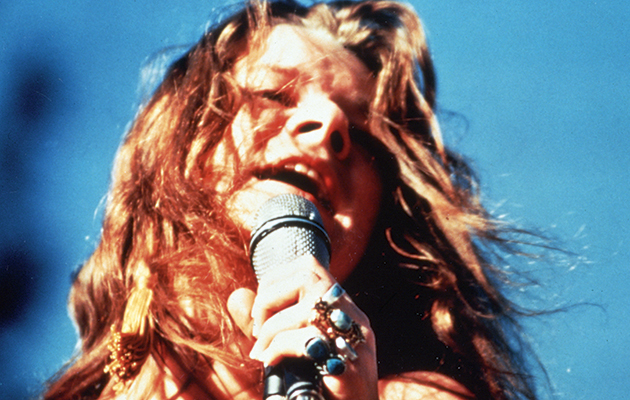With the help of her bandmates, friends and admirers, Uncut looks behind the rock-casualty myth to discover what Janis Joplin was really like... Words: John Lewis. Originally published in Uncut’s June 2009 issue (Take 145). ______________________ It was, at the time, the biggest music festival e...
With the help of her bandmates, friends and admirers, Uncut looks behind the rock-casualty myth to discover what Janis Joplin was really like… Words: John Lewis. Originally published in Uncut’s June 2009 issue (Take 145).
______________________
It was, at the time, the biggest music festival ever staged. Some 200,000 hippies saw Otis Redding and The Who burst on to the US scene; they saw Hendrix set fire to his guitar.
Way down the Monterey ’67 bill, though, was a band no-one had heard of, who had never released a record and who were only known to a few hundred hippies. Big Brother And The Holding Company were fronted by a chubby 24-year-old from Texas called Janis Joplin, and they were about to unleash the acid-rock counterculture upon Middle America. “Janis just ripped the place up,” says Seasick Steve, a friend of Janis Joplin from a spell in mid-’60s San Francisco. “She was singing ‘Ball And Chain’, bashing her heel into the stage like a flamenco dancer, screaming at the top of her voice. Many big names at Monterey tanked. But Janis seemed to get bigger in stature as the gig went on. Watch the film and you see Mama Cass with her mouth open, shaking her head in disbelief. That’s how we all felt.”
A year later, Joplin would walk out on her band. Two years later she’d be the biggest female singer in the US. And three years later she’d be dead.
______________________
Janis Lyn Joplin was born in January 1943 into a conservative, lower-middle-class family in Port Arthur, Texas. Her father was an engineer for Texaco, her mother a college registrar. She talked of being unpopular and shunned at school (“I was a misfit: I read, I painted, I didn’t hate niggers”). Overweight, short-sighted, acne-scarred, and with a fascination for unfashionable strains of folk and blues, she was quickly labelled a “freak” and “weirdo” by the jocks at University Of Texas in Austin, who voted her “ugliest man on campus”.
Aged 20, she dropped out of college and headed for San Francisco, and spent 10 months struggling to make a name on the Bay Area’s folk and blues circuit. She returned to Texas to re-enrol in college, but the lure of San Francisco was too strong, and by June 1966 she was back.
In between her two spells in San Francisco, the city had changed. The folkies and beatniks of North Beach had disappeared, to be replaced by a new scene near the junction of Haight and Ashbury.
Janis was invited to San Francisco by gig promoter Travis Rivers, who met her performing in folk and blues clubs in Austin. He recommended her to one of San Francisco’s bigger local bands, Big Brother And The Holding Company, then looking for a “chick lead singer” to give them stronger stage presence. The band had been playing in various iterations since late 1965 and already comprised four strong personalities. Their bassist and de facto lead singer was San Francisco native Peter Albin; their drummer was New Yorker Dave Getz, an academic who taught at the San Francisco Art Institute. And key to their sound were two guitarists Sam Andrew (who brought some military band training to the chaos) and James Gurley (“a tall, long-haired mystic,” says Andrew, “a wild, untutored, hillbilly visionary”).
“Some bands were still copying The Beatles in 1966,” says David Getz. “We were more inspired by Ornette Coleman, John Coltrane, Pharoah Sanders and Moondog.” Big Brother played improvised psych-rock at a breakneck speed, including manic reinventions of folk, blues, jazz and spirituals. “It was the Great American Songbook done by white punks on dope,” laughs Sam Andrew.
Gurley remembers the band’s first rehearsal with Janis in an old Victorian firehouse in Henry Street where the band practised. “She was dressed very modestly,” says Gurley. “Mexican sandals and blue jeans and a blue workshirt. Kind of a peasant costume. Her hair was long and pinned up. But she had this tough attitude and this incredible voice.”
“My first reaction was that she sounded like a 78rpm disc from the 1930s that you’d play on a Victrola,” says Andrew. “A big, wide voice that stayed in tune no matter how loud she got.”
The band started to adapt their set around Janis’ voice, slowing down their material and leaving room for her improvisations. “They were an excitingly unpredictable band,” says Lenny Kaye, guitarist in the Patti Smith Band and an early follower of the San Francisco scene. “They had this sense of barely unrestrained energy, always teetering out of control. James Gurley’s guitar was like some savage beast that you had to keep in a cage otherwise it would leap off the stage and bite you.”



